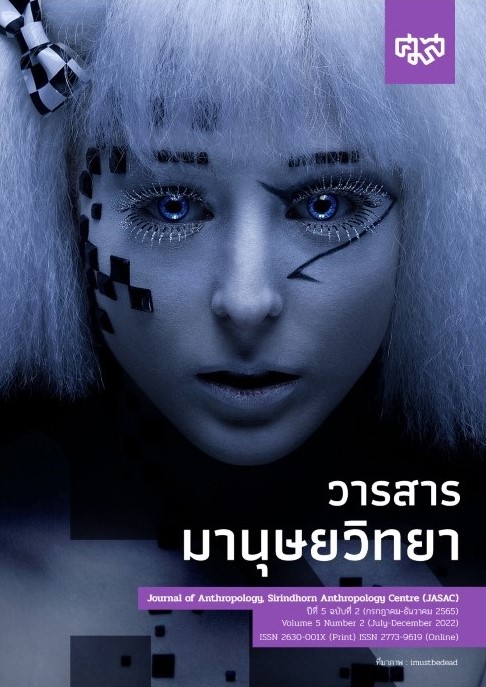เซ็กส์ในนคร การเมืองเรื่องพื้นที่ งานบริการทางเพศ และแรงงานข้ามชาติชาวไทยในเนเธอร์แลนด์
Main Article Content
บทคัดย่อ
เนเธอร์แลนด์เป็นประเทศแรก ๆ ของโลกที่การขายบริการทางเพศอย่างเสรีนั้นถูกกฎหมาย ย่านโคมแดงหรือที่ทั่วโลกรู้จักในนาม “Red light district” กลายเป็นสัญลักษณ์ของเมืองอัมสเตอร์ดัมและดึงดูดนักท่องเที่ยวให้เดินทางมาเยือน ในปี ค.ศ. 2010 เทศบาลเมืองอัมสเตอร์ดัมอ้างว่าพื้นที่ย่านนี้เต็มไปด้วยเครือข่ายอาชญากรรมและการค้ามนุษย์ เสนอให้มีการจัดระเบียบและนำเอาอาชญากรรมออกไปจากพื้นที่ บทความชิ้นนี้ปริทรรศน์และตรวจสอบนโยบายงานบริการทางเพศ 2 โครงการหลัก คือ โครงการ 1012 และเดอะวอลล์ เสนอว่าพื้นที่กลายเป็นเครื่องมือสำคัญในการจัดระเบียบงานบริการทางเพศ ผ่านการปรับทัศนียภาพใหม่ของเมือง (gentrification) กระบวนการนี้ลดจำนวนพื้นที่การขายบริการทางเพศลง ผลักคนอาศัยเดิมออกไป ขณะเดียวกันแทนที่ด้วยธุรกิจที่มูลค่าสูงและนักท่องเที่ยว ซึ่งทำให้พื้นที่ถูกเปิดกว้างและถูกมองเห็นมากเกินไป (visible) ตรงกันข้ามกับธรรมชาติของงานบริการทางเพศที่มักจะอยู่ในพื้นที่สีเทา (grey space) และต้องการความเป็นส่วนตัวซึ่งเป็นลักษณะพิเศษของพื้นที่และท่วงท่าที่โดดเด่นของย่านโคมแดง นอกจากนี้การเมืองของการจัดระเบียบพื้นที่และการออกใบอนุญาตบังคับให้แรงงานไทยต้องเลือกระหว่างการเป็นหมอนวดธรรมดา หรือ การเป็นคนทำงานบริการทางเพศ ซึ่งอยู่ใน “กล่อง”
ของการจัดประเภท จากแต่เดิมที่สามารถลื่นไหลไปมาได้ (fluidity) กลายเป็นไม่สามารถข้ามไปมาระหว่างสองประเภทนี้ได้อย่างเดิม พื้นที่ได้ถูกจัดการและนิยามโดยรัฐและใช้เป็นเครืองมือในการควบคุมแรงงานไทย ซึ่งลดทอนความเป็นผู้กระทำการของพวกเธอลง โดยแต่เดิมนั้นถูกนิยามผ่านความเข้าใจของตัวของเธอเอง
Article Details

อนุญาตภายใต้เงื่อนไข Creative Commons Attribution-NonCommercial-NoDerivatives 4.0 International License.
ลิขสิทธิ์@ของวารสารมานุษยวิทยา
ศูนย์มานุษยวิทยาสิรินธร (องค์การมหาชน), กรุงเทพฯ, ประเทศไทย
ข้อมูลเพิ่มเติม:
https://creativecommons.org/licenses/by-nc-nd/4.0/
เอกสารอ้างอิง
Aalbers, M. B. (2011). The Revanchist Renewal of Yesterday's City of Tomorrow. Antipode, 43(5): 1695-1724.
Aalbers, M. B., & Deinema, M. (2012). Placing Prostitution: The Spatial-Sexual Order of Amsterdam and Its Growth Coalition. City, 16(1-2): 129-145.
Aalbers, M., & Sabat, M. (2012). Re-making a Landscape of Prostitution: Introduction to the Special Feature of Amsterdam Redlight District. City, 16(1-2): 112-128.
Bekker, S., & Porthmus, M. A. (2010). Self-Employment in the Netherlands. European Employment Observatory Review, 1-7.
Bovenkerk, F., & van San, M. (2011). Loverboys in the Amsterdam Red Light District: A Realist Approach to the Study of a Moral Panic. Crime, Media, Culture, 7(2), 185-199. Retrieved from https://doi.org/10.1177/1741659011412124.
Breuil, B. C., & Siegel, D. (2011). Human Trafficking Revisited: Legal, Enforcement and Ethnographic Narratives on Sex Trafficking to Western Europe. Springer, 14(1): 30-46.
Butler, J. (1999). Gender Trouble: Feminism and the Subversion of Identity. New York: Routledge.
Dutch Ministry of Foreign Affairs. (2012). Dutch Policy on Prostitution: Questions and Answer.Retrieved. from http://www.minbuza. nl/binaries/content/assets/minbuza/en/import/en/you_ and_the_netherlands/about_the_netherlands/ethical_ issues/faq-prostitutie-pdf--engels.pdf-2012.pdf
Foucault, M. (1980) ‘Body/Power’. In Colin Gordon (Ed.). Power/ Knowledge: Selected Interviews and Other Writings, 1972- 1977. (pp. 55-62). New York: Pantheon Books.
Harcourt, C., & Donovan, B. (2005). The Many Faces of Sex Work. Sexually Transmitted Infections, 81(3), 201-206
Hubbard, P. (2004). Cleansing the Metropolis: Sex Work and the Politics of Zero-Tolerance. Urban Studies, 41(9): 129-140.
Hubbard, P. (2016). Sex work, Urban Governance and the Gendering of Cities. In Brown, G. & Browne, K. The Routledge Research Companion to Geographies of Sex and Sexualities, (pp. 337- 344). London: Routledge.
Hubbard, P. (2016). The Battle for the High Street. Retail Gentrification, Class and Disgust. Basingstoke: Palgrave Macmillan.
Laing, M., & Ian, C. (2014). Governing Sex Work in the City. Geographic Compass, 8(8): 505-515.
Liempt, I., & Milena, C. (2017). The Gentrification of Progressive Red Light District and Moral Geographies: The Case of Amsterdam and Zurich. A Journal of Feminist Geography, 24(11): 1569-1586.
Löw, M., & Ruhne, R. (2009). Domesticating Prostitution: Study of an Interactional Web of Space and Gender. Space and Culture, 12(2), 232-249. Retrieved from https://doi.org/ 10.1177/1206331209331599
Nijman, J. (1999). Cultural Globalization and the Identity of Place: the Reconstruction of Amsterdam. Cultural Geographies, 6(2): 146-164.
Uitemark, J., & Duyvendak, J. W. (2008). Civilising the City: Populism and Revanchsit Urbanism In Rotterdam. Urban Studies, 45(7): 1485-1503.
Wagner, H., Atkin, S., & Amseburger, H. (2013). Final Report of the International Comparative Study of Prostitution Policy: Austria and the Netherlands. Den Haag: Platform 31.
Yiftachel, O. (2009). Critical theory and ‘gray space’: Mobilization of the colonized, City, 13:2-3, 246-263. Retrieved from DOI: 10.1080/13604810902982227.
Asante, A. & Schaapman, K. 2005. Het onzichtbare zichtbaar gemaakt: prostitutie in Amsterdamanno 2005, http://www.amsterdam. pvda.nl/upload/docs/050520_notitie_prostitutie_def.doc.
Asscher, L. 2010. de Ontsluierde stad. Amsterdam: Uitgeverij Bert Bakker.
Bleeker, Y., Heute, L., Timmermans, M., & Homburg, H. (2014). Sekswerkers aan het woord: De sociale positie van sekswerkers in Nederland in 2014 (Sex workers speaking: The social position of sex workers in the Netherlands in 2014). Regioplan. HYPERLINK "https://repository.wodc.nl/bitstream/handle/ 20.500.12832/2081/2389a-volledige-%20%09tekst_tcm28- 73274.pdf?sequence=2&isAllowed=y"https://repository. wodc.nl/bitstream/handle/20.500.12832/2081/2389a-vo lledige-tekst_tcm28-73274.pdf?sequence=2&isAllowed=y
Bolhaar, H.S. (2016). Slachtoffermonitor Seksueel Geweld tegen Kinderen 2012-2016.DenHaag:Nationaal Rapporteur Mensenhandel en Seksueel Geweld tegenKinderenhttps://www.nationaalrapporteur.nl/binaries/nationaalrapporteur/ documenten/rapporten/2018/06/26/slachtoffermonitor-seksueel-geweld-tegen-kinderen-2016/Nationaal+Rapporteur+-+ Slachtoffermonitor+seksueel+geweld+tegen+kinderen+2016_ tcm23-335177.pdf.
Bottenberg, M. & Janssen, ML. (2012). Onderzoeksrapport Fenomeenonderzoek Mensenhandel en Mensensmokkel in de Chinese Beautybranche. Dienst Nationale Recherche: Universiteit van Amsterdam.
Bureau of the National Rapporteur. (2016). Monitor mensenhandel. Cijfers vervolging en berechting 2011-201. (Human trafficking monitor. Data on prosecution and trial 2011-2015). The Hague.
Gemeente Amsterdam. (2016). Bestuurlijke Monitor Programma Prostitutie 2016. bijlage 1: Jaarmonitor Programma Prostitutie.


